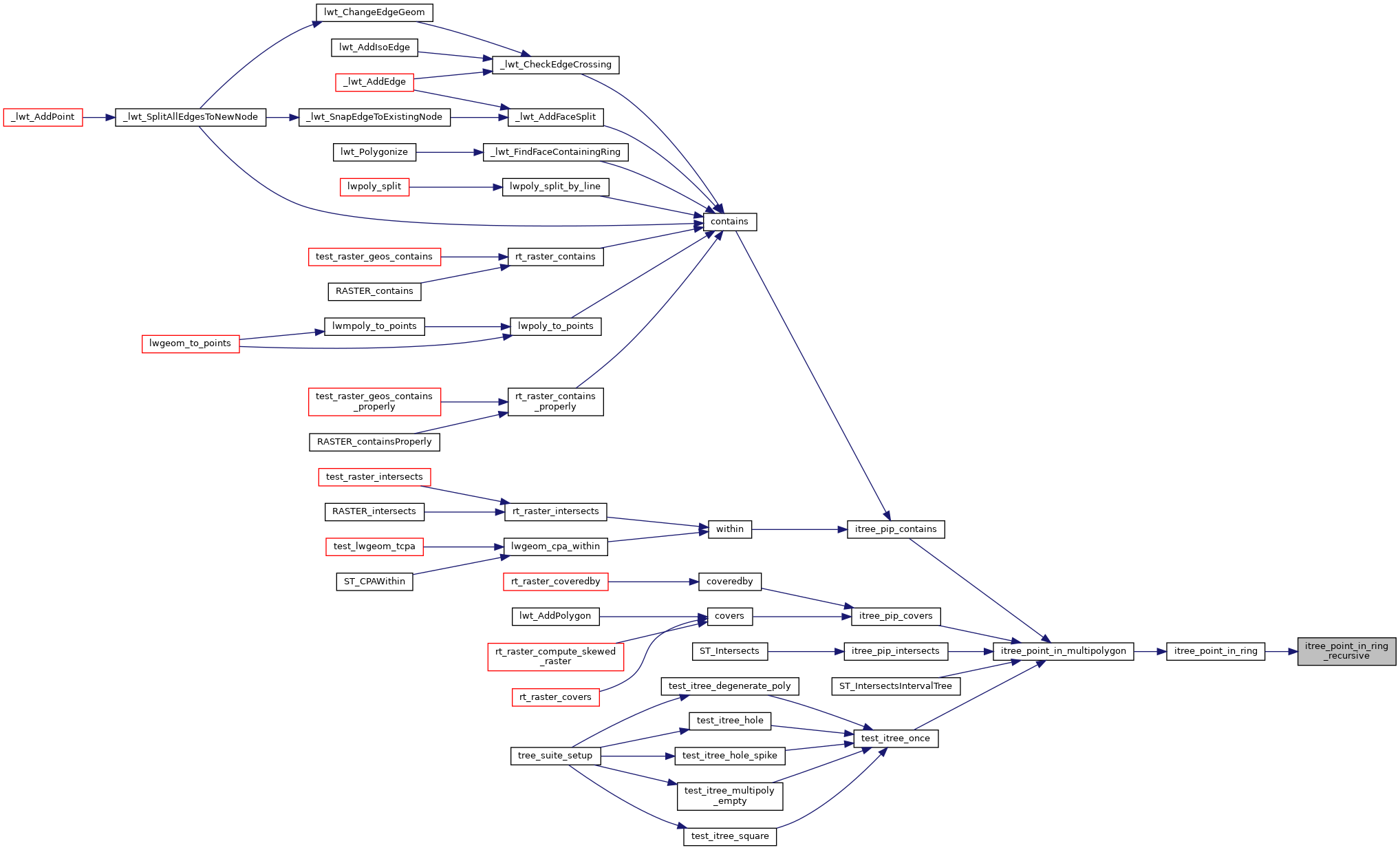◆ itree_point_in_ring_recursive()
|
static |
Definition at line 365 of file intervaltree.c.
425 IntervalTreeResult rslt = itree_point_in_ring_recursive(node->children[i], pa, pt, winding_number);
static int itree_point_on_segment(const POINT2D *seg1, const POINT2D *seg2, const POINT2D *point)
Definition: intervaltree.c:352
static IntervalTreeResult itree_point_in_ring_recursive(const IntervalTreeNode *node, const POINTARRAY *pa, const POINT2D *pt, int *winding_number)
Definition: intervaltree.c:365
static double itree_segment_side(const POINT2D *seg1, const POINT2D *seg2, const POINT2D *point)
Definition: intervaltree.c:336
static const POINT2D * getPoint2d_cp(const POINTARRAY *pa, uint32_t n)
Returns a POINT2D pointer into the POINTARRAY serialized_ptlist, suitable for reading from.
Definition: lwinline.h:97
struct IntervalTreeNode * children[ITREE_MAX_NODES]
Definition: intervaltree.h:43
Definition: liblwgeom.h:389
References IntervalTreeNode::children, IntervalTreeNode::edgeIndex, FP_CONTAINS_INCL, getPoint2d_cp(), ITREE_BOUNDARY, ITREE_OK, ITREE_OUTSIDE, itree_point_on_segment(), itree_segment_side(), IntervalTreeNode::max, IntervalTreeNode::min, IntervalTreeNode::numChildren, and POINT2D::y.
Referenced by itree_point_in_ring().
Here is the call graph for this function:

Here is the caller graph for this function:
